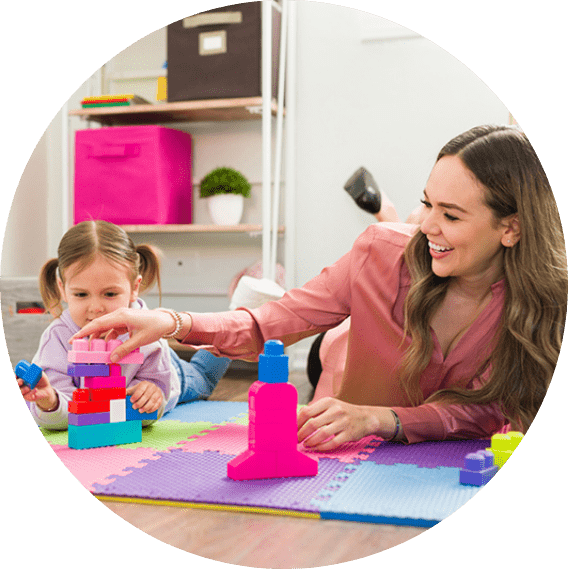Did you know that 50-80% of children with autism struggle with sleep? (Only 1-16% of neurotypical children struggle with sleep.)
Children with autism often experience various sleep challenges that can disrupt their sleep patterns. These challenges may include:
- difficulty falling asleep
- frequent awakenings during the night
- irregular sleep schedules
- early waking times
Sensory sensitivities, anxiety, hyperactivity, and co-occurring conditions such as gastrointestinal issues or epilepsy can also contribute to problems with sleep in children with autism.
Keep reading to learn how you can help your child with autism get a good night’s rest.
10 Tips to Help Your Child with Autism Sleep Better
Sleep Tip #1: Set a consistent and appropriate bedtime for your child.
Consistency in bedtime is crucial for regulating sleep-wake cycles. Choose a bedtime that allows your child to get the recommended amount of sleep for their age.
Sleep Tip #2: Create a safe, comfortable, and sensory-friendly sleep environment.
Children with autism may be sensitive to environmental stimuli such as noise, light, and texture. Designing a sensory-friendly sleep environment can promote relaxation and help your child feel more at ease when it’s time to sleep. Consider bedding materials, room temperature, and lighting to create a soothing sleep environment for your child.
Sleep Tip #3: Avoid stimulants like caffeine and sugar before bed.
Stimulants can interfere with your child’s ability to fall asleep and stay asleep. Limiting caffeine intake (e.g., chocolate, chocolate flavored foods/drinks, some chewing gum) and avoiding sugary snacks close to bedtime can help calm your child’s nervous system and prepare them for sleep.
Sleep Tip #4: Make sure your child is getting enough physical activity during the day.
Regular exercise is essential for promoting healthy sleep patterns. Engaging in physical activities during the day can help your child burn energy, reduce restlessness, and regulate sleep-wake cycles.
Sleep Tip #5: Plan your child’s naps appropriately.
While napping can be beneficial for children, it’s essential to time naps in a way that doesn’t interfere with nighttime sleep. Aim for consistent nap times and durations to maintain a regular sleep schedule. Avoid naps late in the day and naps that are too long.
Sleep Tip #6: Tell a bedtime story before bed.
Reading a bedtime story can be a calming and enjoyable way to prepare for bed. Choose books with soothing themes and gentle illustrations to help your child unwind. You can click here for a list of children’s books featuring neurodivergent characters.
Sleep Tip #7: Try using a weighted blanket.
Some children with autism find comfort and security in the gentle pressure provided by a weighted blanket. The deep touch pressure from the blanket can promote relaxation, reduce anxiety, and improve sleep quality.
Sleep Tip #8: Practice relaxation techniques before bed.
Incorporating relaxation techniques such as deep breathing exercises or guided imagery can help your child unwind and prepare for sleep.
Sleep Tip #9: Prioritize daylight and limit blue light.
Exposure to natural daylight during the day helps regulate your child’s circadian rhythm, promoting better sleep at night. Limiting exposure to blue light from electronic devices before bedtime can signal to the brain that it’s time to wind down and prepare for sleep.
Sleep Tip #10: Consider a bedtime snack.
Offering a light (and nutritious) snack before bed can help stabilize your child’s blood sugar levels and prevent hunger-induced awakenings during the night. Choose snacks that are low in sugar and high in protein or complex carbohydrates, such as a small serving of yogurt with fruit or whole-grain crackers with cheese.
Bonus Tip: Create a bedtime routine and stick to it.
Consistency is key for children with autism. Establishing a calming bedtime routine using a combination of some of these tips, can help signal to your child that it’s time to wind down and prepare for sleep. A nighttime routine can include activities such as taking a bath, brushing teeth, putting on pajamas, reading a book, or listening to calming music.
You may also want to consider using a visual schedule for your child’s bedtime routine. Visual schedules provide a way for children with autism to understand the sequence of activities leading up to bedtime. Visual supports can reduce anxiety and provide a clear expectation of what comes next.




